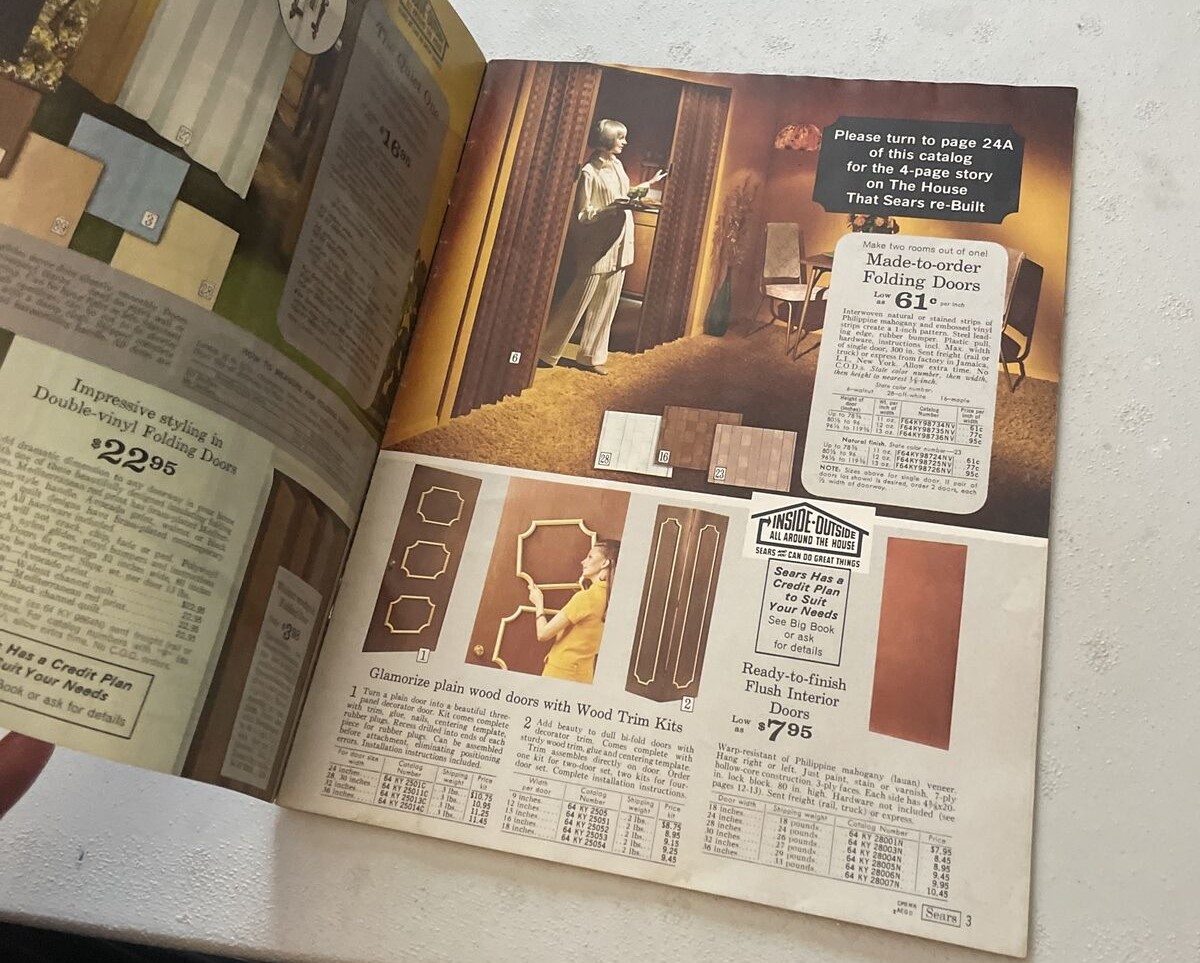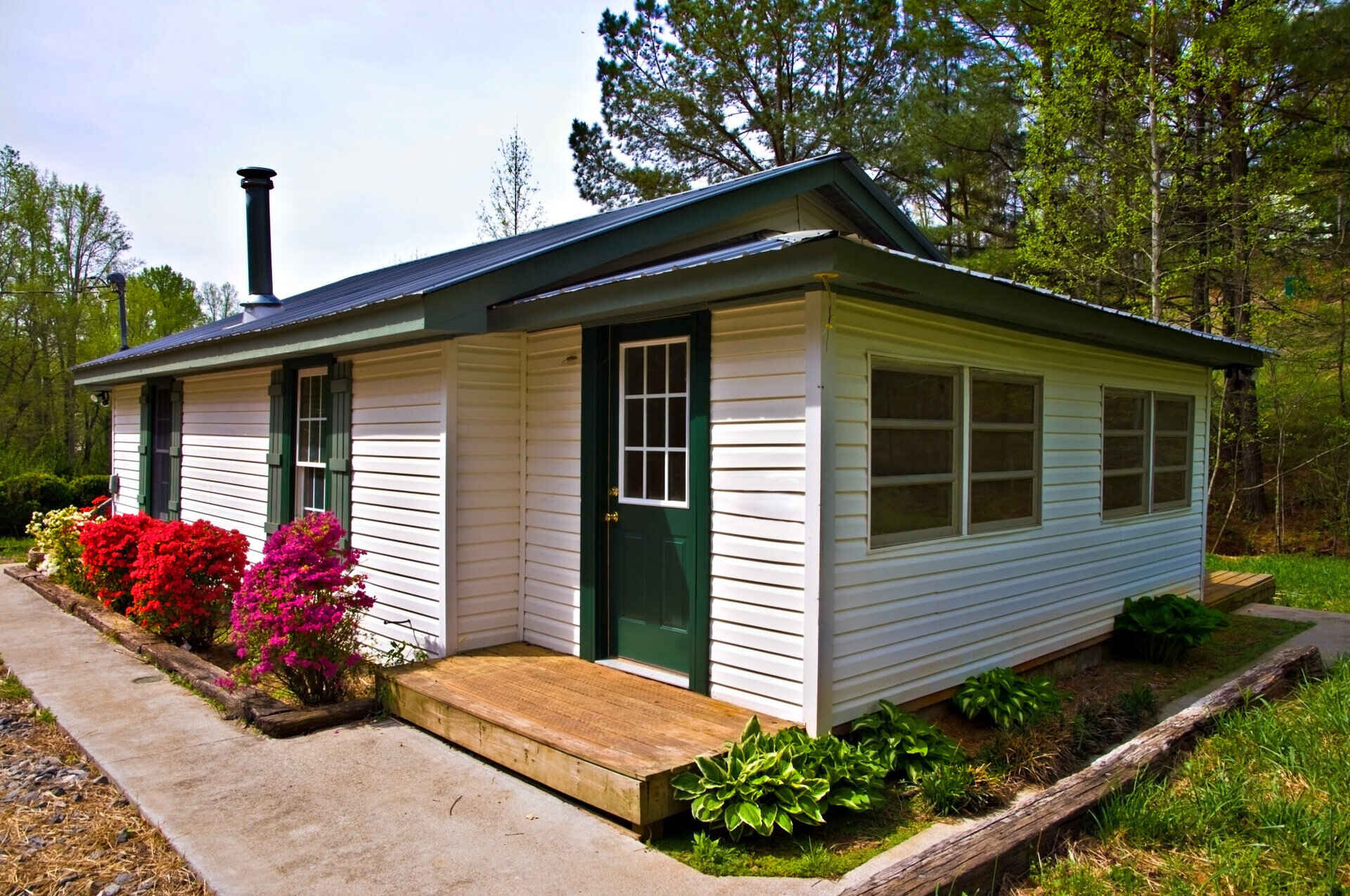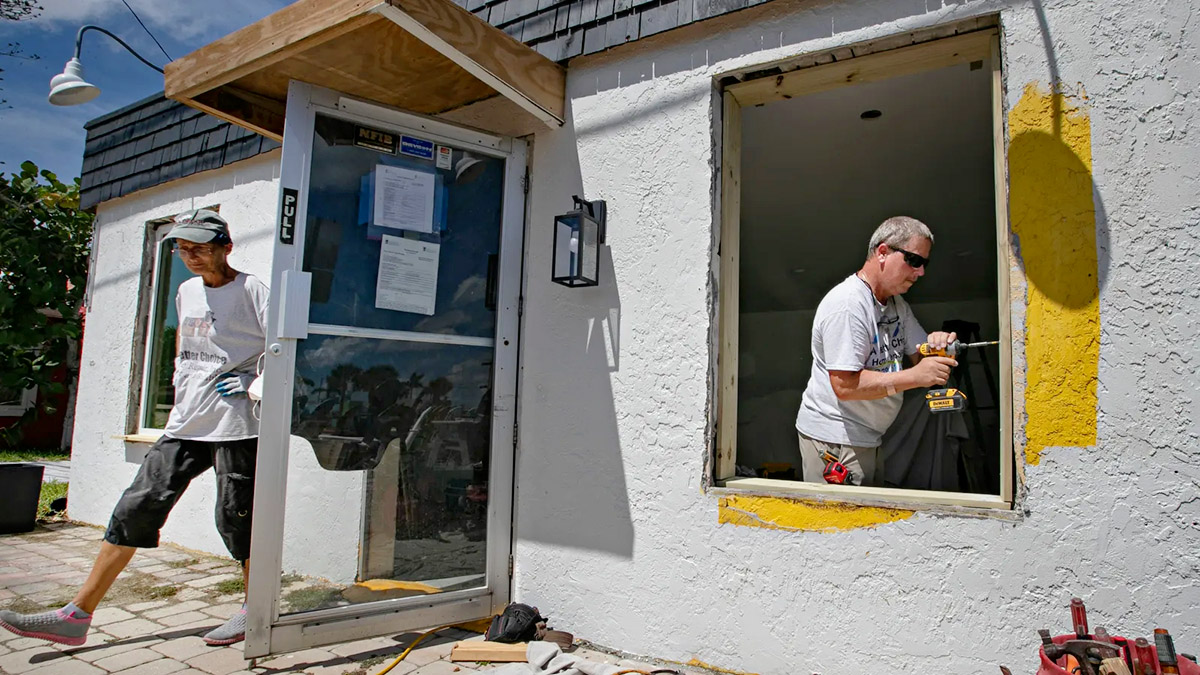Home>Renovation & DIY>Home Renovation Guides>Who Started The Home Improvements Catalog


Home Renovation Guides
Who Started The Home Improvements Catalog
Modified: October 20, 2024
Discover the origins of the home improvements catalog and get valuable home renovation guides to kickstart your next project. Explore the history and find expert advice for your renovations.
(Many of the links in this article redirect to a specific reviewed product. Your purchase of these products through affiliate links helps to generate commission for Storables.com, at no extra cost. Learn more)
Introduction
Read more: Who Owns First Home Improvements
The Fascinating Origins of Home Improvements Catalog
Welcome to the captivating world of home improvements! Whether you’re a seasoned DIY enthusiast or a novice homeowner, the allure of enhancing living spaces is irresistible. In the digital age, the concept of perusing a catalog for home improvement inspiration might seem like a relic of the past. However, the history of home improvements catalogs is a testament to the enduring appeal of tangible, curated resources for transforming living spaces.
As we embark on an exploration of the origins and impact of home improvements catalogs, we’ll uncover the intriguing story of how these catalogs have shaped and influenced the way we approach home renovation projects. From humble beginnings to widespread popularity, the journey of home improvements catalogs is a testament to the timeless allure of DIY endeavors and the quest for creating spaces that reflect our unique personalities and lifestyles.
Join us on a journey through time as we delve into the evolution of home improvements catalogs and the profound impact they have had on homeowners, DIY enthusiasts, and the home renovation industry as a whole.
Key Takeaways:
- Home improvements catalogs have a fascinating history, starting from mail-order publications in the 19th century to today’s digital platforms, shaping DIY culture and inspiring creativity in home renovation projects.
- These catalogs have empowered homeowners with inclusive and diverse ideas, fostering a sense of community and democratizing home renovation, while also driving industry innovation and trends.
The Beginnings of Home Improvements Catalog
The origins of home improvements catalogs can be traced back to the late 19th century, a time when the industrial revolution was in full swing, and the concept of DIY home improvement was gaining traction. In 1872, a visionary named Montgomery Ward revolutionized the retail industry by publishing the first mail-order catalog, which included a modest selection of home improvement products. This groundbreaking catalog empowered homeowners to access a wide array of tools, materials, and fixtures without having to visit physical stores, marking the dawn of a new era in home improvement accessibility.
Following in the footsteps of Montgomery Ward, Sears, Roebuck and Co. entered the scene with its own mail-order catalog, offering an extensive range of home improvement products to an ever-expanding customer base. These catalogs became invaluable resources for homeowners seeking to renovate, decorate, and enhance their living spaces, providing a convenient and comprehensive source of inspiration and supplies.
Fast forward to the 20th century, and the advent of the digital age brought about a paradigm shift in the way home improvements catalogs were presented. While traditional printed catalogs remained popular, the emergence of online platforms and e-commerce websites opened up new possibilities for showcasing and purchasing home improvement products. This digital evolution not only expanded the reach of home improvements catalogs but also enriched the browsing and shopping experience for consumers, ushering in an era of unprecedented convenience and accessibility.
As the home improvement industry continued to flourish, specialized catalogs began to emerge, catering to niche interests and specific aspects of home renovation. From flooring and lighting to outdoor landscaping and smart home technology, these specialized catalogs offered in-depth expertise and a curated selection of products, serving as invaluable guides for homeowners embarking on diverse renovation projects.
The evolution of home improvements catalogs reflects the enduring appeal of DIY culture and the innate human desire to personalize and improve living spaces. From humble mail-order beginnings to the digital age of e-commerce, these catalogs have remained steadfast companions for homeowners, offering a treasure trove of ideas, products, and expert guidance for realizing their renovation aspirations.
Growth and Expansion
As the 20th century progressed, home improvements catalogs experienced exponential growth and diversification, becoming indispensable resources for homeowners and DIY enthusiasts alike. The proliferation of home improvement stores and the burgeoning popularity of DIY culture fueled the expansion of catalogs, leading to an ever-expanding array of products and ideas at consumers’ fingertips.
With the advent of mass production and technological advancements, home improvements catalogs evolved to encompass a wide spectrum of offerings, ranging from basic hand tools and building materials to innovative appliances and cutting-edge home technologies. This expansion mirrored the evolving needs and aspirations of homeowners, catering to diverse tastes and preferences while inspiring creativity and innovation in home renovation endeavors.
Furthermore, the emergence of specialty catalogs dedicated to specific areas of home improvement, such as kitchen remodeling, bathroom renovations, and outdoor living spaces, provided tailored guidance and product selections for homeowners seeking to embark on targeted projects. These specialized catalogs not only showcased the latest trends and innovations but also served as educational resources, empowering consumers with the knowledge and inspiration needed to bring their renovation visions to life.
Amidst this growth and diversification, home improvements catalogs also played a pivotal role in fostering a sense of community and shared passion among DIY enthusiasts. Through the exchange of ideas, tips, and success stories, these catalogs served as more than mere shopping guides; they became platforms for collaboration and camaraderie, uniting individuals with a common interest in transforming their living spaces into personalized havens of comfort and style.
As the 21st century dawned, the digital revolution propelled home improvements catalogs into the online realm, opening up unprecedented opportunities for engagement and interaction. Interactive digital catalogs, augmented reality experiences, and immersive online platforms redefined the way consumers explored and envisioned home improvement possibilities, offering a dynamic and personalized browsing experience that transcended the limitations of traditional printed catalogs.
Today, home improvements catalogs continue to evolve in response to shifting consumer preferences and technological advancements, embracing sustainability, smart home integration, and holistic design concepts. With a focus on eco-friendly products, energy-efficient solutions, and seamless connectivity, these catalogs reflect the contemporary ethos of responsible, forward-thinking home improvement, inspiring homeowners to embark on transformative projects that align with their values and aspirations.
The first home improvements catalog was started by a company called Sears, Roebuck and Co. in the late 1800s. They offered a wide range of products for home improvement and were pioneers in the mail-order catalog business.
The Impact of Home Improvements Catalog
Home improvements catalogs have left an indelible mark on the home renovation landscape, shaping consumer behaviors, industry trends, and the very essence of DIY culture. Their impact extends far beyond mere product showcases, encompassing profound influences on the way individuals conceptualize, plan, and execute home improvement projects.
One of the most significant impacts of home improvements catalogs lies in their role as catalysts for creativity and inspiration. By curating an extensive array of products, designs, and practical solutions, these catalogs have empowered homeowners to envision and actualize their renovation dreams, fostering a sense of confidence and enthusiasm in tackling diverse projects. From small-scale decor enhancements to full-scale remodels, the accessibility of ideas and resources within these catalogs has emboldened individuals to explore their creativity and express their unique tastes within their living spaces.
Moreover, home improvements catalogs have played a pivotal role in democratizing home renovation, making it accessible to a broad spectrum of consumers. By presenting an inclusive range of products and price points, these catalogs have dismantled barriers to entry, enabling individuals from various backgrounds and budget constraints to engage in the gratifying pursuit of improving their homes. This inclusivity has not only expanded the consumer base for home improvement products but has also fostered a sense of empowerment and fulfillment among individuals who may have previously felt excluded from the realm of renovation possibilities.
Furthermore, home improvements catalogs have been instrumental in driving innovation and trends within the home renovation industry. By showcasing emerging technologies, sustainable practices, and design-forward concepts, these catalogs have served as incubators for new ideas and approaches, influencing the trajectory of home improvement products and services. From the popularization of eco-friendly materials to the integration of smart home innovations, the impact of these catalogs on industry evolution is palpable, shaping the way homes are conceived, constructed, and adorned.
On a more personal level, home improvements catalogs have fostered a sense of community and camaraderie among homeowners and DIY enthusiasts. Through shared experiences, advice, and triumphs, individuals have found common ground within the pages of these catalogs, forming connections and networks that transcend geographical boundaries. This sense of belonging and mutual support has enriched the home improvement journey, turning it into a collaborative and enriching endeavor that extends beyond the confines of individual projects.
In essence, the impact of home improvements catalogs transcends their role as mere repositories of products; they are conduits of empowerment, inspiration, and community, shaping the very fabric of how we perceive, pursue, and cherish the spaces we call home.
Conclusion
The evolution of home improvements catalogs stands as a testament to the enduring allure of transforming living spaces and the profound impact of curated resources on the home renovation landscape. From their modest beginnings as mail-order publications to their contemporary digital incarnations, these catalogs have not only provided access to a myriad of products but have also ignited creativity, fostered inclusivity, and driven industry innovation.
As we reflect on the journey of home improvements catalogs, it becomes evident that their influence extends beyond the realm of home renovation; they have become woven into the fabric of personal aspirations, communal connections, and the collective pursuit of creating homes that reflect individuality and comfort.
Looking ahead, the legacy of home improvements catalogs continues to evolve, embracing sustainability, technological advancements, and design ingenuity. As they adapt to the ever-changing landscape of consumer preferences and industry trends, these catalogs remain steadfast companions for homeowners, offering guidance, inspiration, and a sense of belonging in the shared pursuit of enhancing living spaces.
In an era defined by rapid digitalization and fleeting trends, home improvements catalogs endure as timeless companions, embodying the enduring spirit of creativity, empowerment, and the universal yearning to craft spaces that resonate with our deepest sensibilities.
As we turn the pages of these catalogs, whether physical or digital, we embark on a journey of exploration, innovation, and self-expression, united by the shared belief that every home is a canvas waiting to be adorned with the brushstrokes of personal vision and ingenuity.
The story of home improvements catalogs is far from reaching its final chapter; it is an ever-unfolding narrative of inspiration, connection, and the timeless pursuit of transforming houses into cherished havens we proudly call home.
Frequently Asked Questions about Who Started The Home Improvements Catalog
Was this page helpful?
At Storables.com, we guarantee accurate and reliable information. Our content, validated by Expert Board Contributors, is crafted following stringent Editorial Policies. We're committed to providing you with well-researched, expert-backed insights for all your informational needs.















0 thoughts on “Who Started The Home Improvements Catalog”